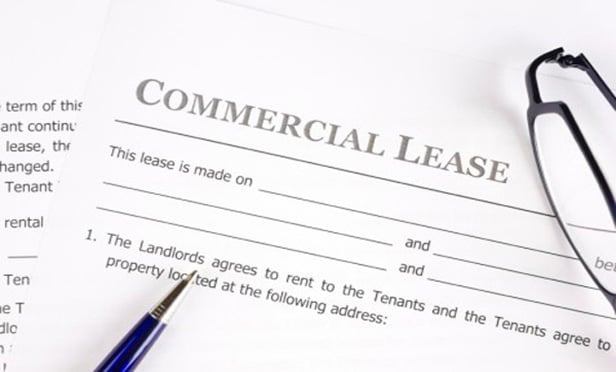Features

Regulating Interior Landmarks: New York Court Says Duties Don't End
What powers does the New York City Landmarks Preservation Commission have to require a building owner to maintain a mechanical clock located in the interior of a building? In <i>Save America's Clocks, Inc. v. City of New York</i>, New York's Appellate Division, First Department, held that the Commission had power to require maintenance of the clock, and to require public access to it.
Columns & Departments

Case Notes
Suit in Second Jurisdiction Is Duplicative<br>Mailing Rent Check While Doing Unauthorized Acts Is Not Mail Fraud
Features

Recreational Marijuana in New Jersey
<b><i>Real Estate and Other Issues Will Need Consideration</b></i><p>Given NJ Governor Phil Murphy's campaign pledge to legalize marijuana for recreational use in his first 100 days, the state is on the cusp of a major new revenue stream-recreational marijuana.
Features

What Retailers Can Learn from Recent Bankruptcies
Understanding the factors leading up to these bankruptcies, as well as the strategies used by retailers to emerge from bankruptcy, can give retailers significant knowledge about trends in consumer spending and how retailers can improve their overall positions going forward.
Columns & Departments

Development
Failure to Require SEIS Not Arbitrary<br>Board of Fire Commissioners Lacks Standing to Challenge SEQRA Determination<br>Challenge to Pilot Agreement Reinstated<br>Statute of Limitations Bars Challenge to Excessive Height<br>Billboard Regulation Upheld
Features

Serving Two Masters: When 'Bankruptcy Remote' Meets Public Policy
<i><b>How Lenders to BREs Can Reduce the Risk of Debtor Bankruptcy Without Compromising Public Policies</b></i><p>Structured financing transactions, including those pertaining to commercial real estate, make extensive use of entities formed for the specific purpose of reducing the likelihood that assets will be involved in a potential bankruptcy proceeding. Known as “bankruptcy-remote entities,” or “BREs,” these entities are subject to structures and covenants in financing documents and their own formation documents, which are designed to reduce the likelihood that the BRE will file for bankruptcy protection.
Features

Anti-Forfeiture Statute Saves a Debtor's Exercise of Option to Renew Lease
In a recent decision, Bankruptcy Judge Christopher S. Sontchi addressed the question of whether a Chapter 11 debtor, the tenant under a commercial lease, could exercise an option to renew the lease during the bankruptcy proceedings, even though the debtor was in default under the lease and the lease specified that it could not be renewed if defaults existed at the time the option was exercised.
Columns & Departments

Landlord & Tenant
Section 8 Status Protects Tenant from Eviction<br>Questions of Fact About Acceptance of Surrender
Columns & Departments

Case Notes
Moratorium Invalidated Where Consideration of Zoning Changes Not Planned<br>In Texas, LLCs Cannot Be Made to Pay Attorney Fees<br>No Interaction, No Equitable Tolling
Columns & Departments

Real Property Law
Punitive Damages for Intentional Encroachment<br>Questions of Fact About Readiness to Perform<br>Issues of Fact Preclude Summary Judgment in Action for Brokerage Commission<br>No Meritorious Defense to Foreclosure Action
Need Help?
- Prefer an IP authenticated environment? Request a transition or call 800-756-8993.
- Need other assistance? email Customer Service or call 1-877-256-2472.
MOST POPULAR STORIES
- How to TOOT Your Own Horn: Exceptional Self EvaluationsIt's that time again. As the year comes to a close many firms are beginning the associate review process. Even if your firm does not have a formal review process I recommend that you write a self-evaluation that outlines your achievements and specifies your goals for the coming year.Read More ›
- The DOJ's New Parameters for Evaluating Corporate Compliance ProgramsThe parameters set forth in the DOJ's memorandum have implications not only for the government's evaluation of compliance programs in the context of criminal charging decisions, but also for how defense counsel structure their conference-room advocacy seeking declinations or lesser sanctions in both criminal and civil investigations.Read More ›
- The DOJ's Corporate Enforcement Policy: One Year LaterThe DOJ's Criminal Division issued three declinations since the issuance of the revised CEP a year ago. Review of these cases gives insight into DOJ's implementation of the new policy in practice.Read More ›
- The FTC Gets Into the College Athlete NIL GameAs national champions are crowned in men's and women's basketball, hundreds of thousands of college athletes are entering the influencer marketplace for the first time and now find themselves attractive candidates in the fast growing influencer marketing arena. With influencer marketing potentially providing a 5x return on investment, many brands are eager to get into the industry, but it doesn't come without risks as the FTC Commissioner is taking a closer look at the use of influencers for marketing.Read More ›
- Use of Deferred Prosecution Agreements In White Collar InvestigationsThis article discusses the practical and policy reasons for the use of DPAs and NPAs in white-collar criminal investigations, and considers the NDAA's new reporting provision and its relationship with other efforts to enhance transparency in DOJ decision-making.Read More ›
